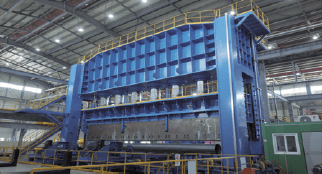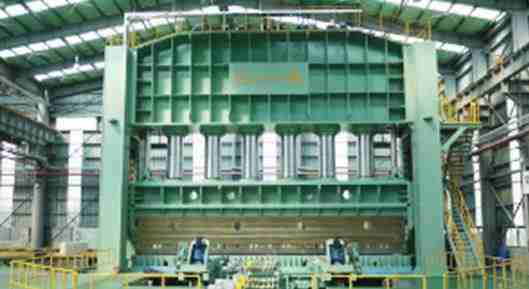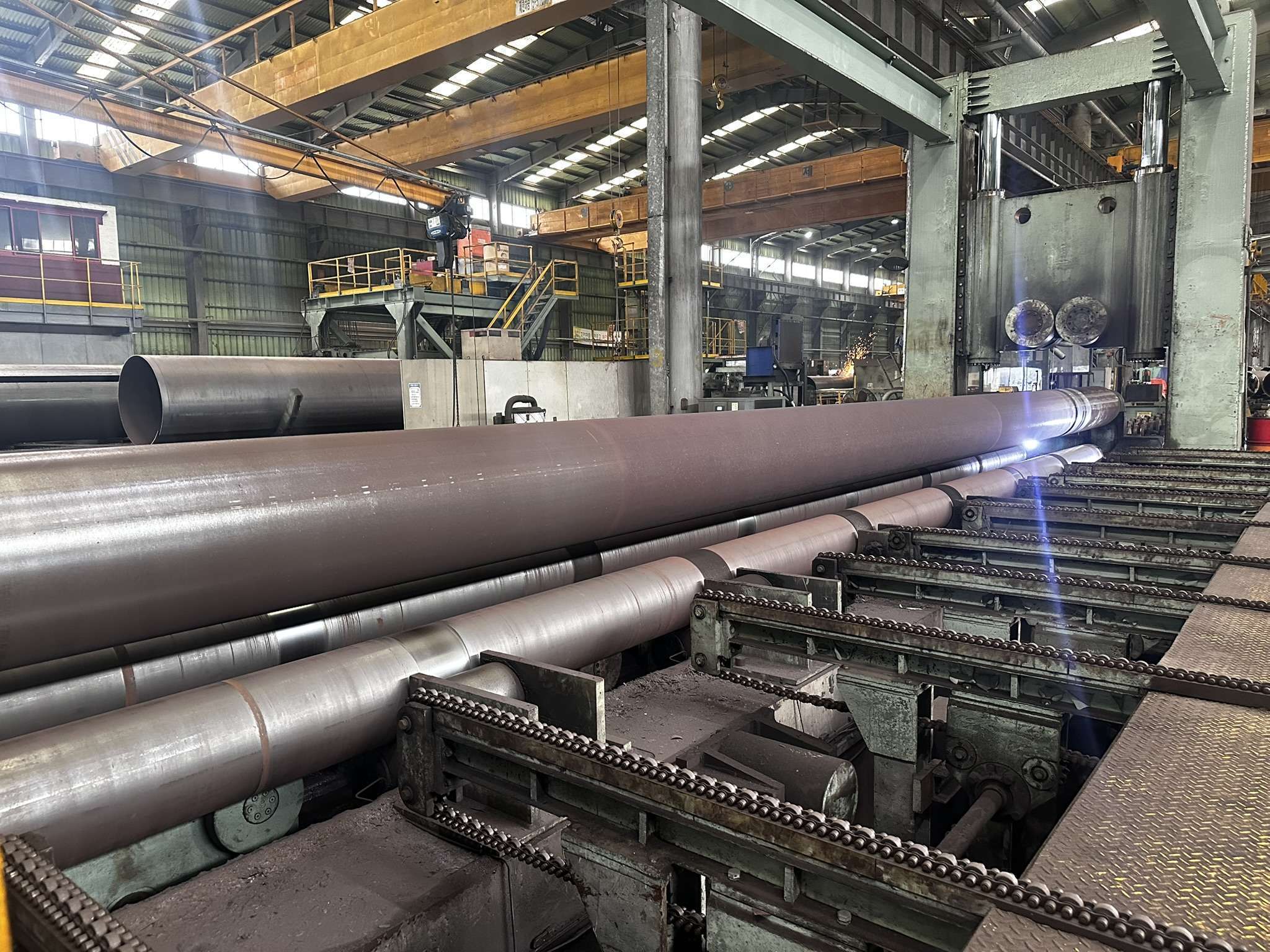At Hilco Industrial, we often visit LSAW pipe manufacturing installations, observe various layouts and types of machinery, speak directly with equipment operators and engineers, and receive a wide range of technical inquiries from potential buyers around the world.
Through our field experience and conversations with industry professionals, we’ve compiled a comparison of the most widely used forming processes in LSAW welded pipe manufacturing. The goal is simple: Help you better understand the possibilities and identify what serves your ambitions best.
The three primary processes—JCO (J-C-O) Pressing, UO (U-O) Pressing, and the 3-Roll Bending Process—each offer distinct advantages depending on your plant setup, production volume, wall thickness requirements, and cost targets.
JCO Process (J-C-O Pressing)
The JCO Process uses a single integrated press to shape the steel plate into a pipe in sequential stages: first a “J”, then “C”, and finally an “O”. This progressive forming approach balances flexibility, moderate investment, and solid performance.
Key Features:
- Flexible for different diameters—no need to change dies
- Lower tooling cost than UO due to reusable press setup
- Moderate setup time—adjusting roll width rather than full die changes
- Good for thick and high-strength steels (typically up to 25–40 mm)
- Medium to high productivity, suitable for a variety of orders


UO Process (U-O Pressing)
The UO Process forms the pipe in two distinct press stages: first into a “U” shape, then into an “O”. Each diameter requires specific press dies, making this process more specialized and highly accurate, especially for thick-walled or high-strength pipes.
Key Features:
- Excellent forming accuracy—precise dimensional control
- Capable of very thick plates, up to 50 mm or more
- Lower flexibility due to the need for different dies
- Higher tooling cost and longer setup time
- Best suited for long production runs of the same diameter

3-Roll Bending Process
The 3-Roll Bending Process uses three adjustable rollers to continuously bend the steel plate into a cylindrical shape. It’s the fastest and most flexible method among the three.
Key Features:
- No dies required—just adjust roller spacing
- Lowest tooling cost
- Fastest setup and changeover time
- Highly productive, ideal for mass production
- Limited for high-strength thick steel—typically up to 20–25 mm

Summary Comparison
| Feature | JCO Process (J-C-O Press) | UO Process (U-O Press) | 3-Roll Bending Process |
|---|---|---|---|
| Press Setup | Single integrated press, gradually forms the pipe in steps (J-C-O) | Two separate press stages: U-press first, then O-press | Uses adjustable rolls for bending |
| Flexibility | More flexible, adjustable to various diameters with no need for different dies | Less flexible; requires specific dies for each pipe size | Highly flexible, easy diameter adjustments |
| Changeover Time | Faster setup; no need for new dies for every diameter | Slower setup due to die changes for different pipe sizes | Fastest setup since it’s just adjusting roll spacing |
| Cost of Tooling | Lower, as it doesn’t need different dies | Higher, due to inventory of dies required for each diameter | Lowest, as it only uses rolling equipment |
| Pipe Forming Process | Forming happens in progressive steps, integrated press system | First press (U), then second press (O), making it a two-step forming | Continuous bending using rollers |
| Capabilities | Good for thick and high-strength steels, up to 25-40 mm | Excellent for thick and high-strength steels, up to 50 mm or more | Limited for thick steels; more suited for thinner plates (typically up to 20-25 mm) |
| Productivity | Medium to High | Medium to Low | High |
| Complexity | Moderate | High | Low |
| Advantages | Flexible production, suitable for different pipe sizes, faster than UO | Best for thick-wall pipes, high forming accuracy | High efficiency, suitable for mass production |
| Disadvantages | Requires precise alignment, slower than 3-roll bending | Complex equipment, high initial investment, slower process | Limited to lower thicknesses, less ideal for thick high-strength steels |
Final Thoughts
Each LSAW forming method comes with distinct advantages. The JCO process offers great flexibility and cost savings; the UO process ensures unmatched forming accuracy for thick-wall applications; and the 3-roll bending method delivers high efficiency, perfect for high-volume, standard thickness production.
What is your experience with LSAW Forming?
At Hilco, we believe in practical knowledge-sharing. If you’ve worked with different LSAW forming equipment, or have insights from your plant experience, we’d love to hear from you. Your input helps us serve our global clients better and refine our industry understanding.
Let’s keep improving LSAW pipe production—Together.

